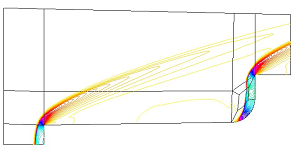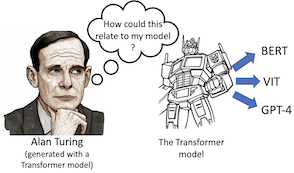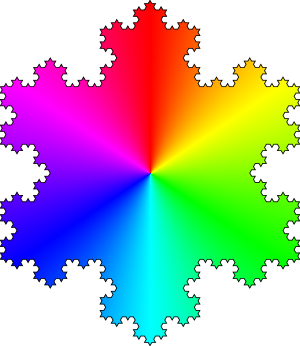Bachelor/Master Theses, Semester Projects, and DAS DS Capstone Projects
If you are interested in one of the following topics, please send an email to Prof. Bölcskei and include your complete transcripts. Please note that we can not respond to requests that are sent directly to PhD students in the group or do not contain your transcripts.
These projects serve to illustrate the general nature of projects we offer. You are most welcome to inquire directly with Prof. Bölcskei about tailored research projects. Likewise, please contact Prof. Bölcskei in case you are interested in a bachelor thesis project.
Also, we have a list of ongoing and finished theses on our website.
List of Semester Projects (SP)
- Acoustic sensing and trajectory estimation of objects flying at supersonic speed (with industry)
- Building probability models from scattering networks
- Minimal depth to represent continuous piecewise linear (CPWL) functions by ReLU networks
- General signal denoising
- Why transformers cannot learn maths?
List of Master Projects (MA)
- Learning cellular automaton transition rules with transformers
- Minimal depth to represent continuous piecewise linear (CPWL) functions by ReLU networks
- Finite-precision neural networks
- General signal denoising
- The "logic" behind transformers
- Generating singular distributions through neural networks
- Why transformers cannot learn maths?
Acoustic sensing and trajectory estimation of objects flying at supersonic speed (with industry) (SP)

The goal of this project is to investigate new techniques for the task at hand, such as linearization of non-linear systems of equations, least squares fitting, and neural network driven machine learning. Existing hardware and algorithms provide a starting point for the project, which will be carried out in collaboration with an industry partner called SIUS (located in Effretikon, Zurich). SIUS offers close supervision and the possibility to use hardware and a test laboratory.
About the industry partner: SIUS is the world’s leading manufacturer of electronic scoring systems in shooting sports. The company is specialized in producing high speed and high precision measurement equipment capable of measuring projectile position and trajectory and has been equipping the most important international competitions including the Olympic Games for decades.
Type of project: 20% literature research, 20% theory, 50% implementation/programming, 10% experiments
Prerequisites: Solid mathematical background, knowledge of SciPy, Matlab or a similar toolset, ideally knowledge on (deep) neural networks
Supervisor: Michael Lerjen, Steven Müllener
Professor:
Helmut Bölcskei
References:
[1] SIUS Homepage [Link to Document]
Building probability models from scattering networks (SP)
The goal of this project is to study how well the probability measure obtained via the scattering network method [3] approximates the true probability measure. Our focus is on understanding the impact of the network design, particularly the choice of the filters, on the approximation error.
Type of project: 100% theory or 60% theory and 40% programming
Prerequisites: Strong mathematical background
Supervisor: Konstantin Häberle
Professor:
Helmut Bölcskei
References:
[1]
S. Mallat, “Group invariant scattering,” Communications on Pure and Applied
Mathematics, vol. 65, no. 10, pp. 1331–1398, 2012.
[Link to Document]
[2] T. Wiatowski and H. Bölcskei, “A mathematical theory of deep convolutional neural networks for feature extraction,” IEEE Transactions on Information Theory, vol. 64, no. 3, pp. 1845–1866, 2018. [Link to Document]
[3] J. Bruna and S. Mallat, “Multiscale sparse microcanonical models,” Mathematical Statistics and Learning, vol. 1, no. 3, pp. 257–315, 2018. [Link to Document]
Learning cellular automaton transition rules with transformers (MA)
A cellular automaton (CA) is a discrete dynamical system consisting of a regular lattice in one or more dimensions with cell values taken from a finite set. The cells change their states at synchronous discrete time steps based on a transition rule [1]. Despite the simplicity of the CA model, it can exhibit complex global behavior. With suitably chosen transition rules, cellular automata can simulate a plethora of dynamical behaviors [2, 3]. The inverse problem of deducing the transition rule from a given global behavior is extremely difficult [4]. In this project, you will investigate the possibility of training transformers [5] to learn CA transition rules.
Type of project: 30% theory, 70% implementation
Prerequisites: Good programming skills, knowledge in machine learning
Supervisor: Yani Zhang
Professor:
Helmut Bölcskei
References:
[1]
J. Kari, “Theory of cellular automata: A survey,” Theoretical computer science, 334(1-3):3–33, 2005.
[Link to Document]
[2] T. Toffoli and N. Margolus, “Cellular automata machines: A new environment for modeling,” MIT press, 1987. [Link to Document]
[3] A. Adamatzky, “Game of life cellular automata,” vol. 1, Springer, 2010. [Link to Document]
[4] N. Ganguly, B. K. Sikdar, A. Deutsch, G. Canright, and P. P. Chaudhuri, “A survey on cellular automata,” 2003. [Link to Document]
[5] A. Vaswani, et al., “Attention is all you need,” Advances in Neural Information Processing Systems 30, 2017. [Link to Document]
Minimal depth to represent continuous piecewise linear (CPWL) functions by ReLU networks (MA/SP)
In [5], a conjecture was recently formulated regarding this question. The conjecture states that the minimum number of hidden layers needed to represent any 𝑑-dimensional CPWL function is exactly ⌈log₂(𝑑+1)⌉. In this project, you would first write a literature review based on [4, 5, 6, 7] and then make attempts towards solving the conjecture formulated in [5].
Type of project: 100% theory, or 80% theory and 20% programming
Prerequisites: Strong mathematical background
Supervisor: Yang Pan
Professor:
Helmut Bölcskei
References:
[1]
G. Cybenko, “Approximation by superpositions of a sigmoidal function,” Mathematics of Control, Signals and Systems, vol. 2, no 4, pp. 303–314, 1989.
[Link to Document]
[2] K. Hornik, “Approximation capabilities of multilayer feedforward networks,” Neural Networks, vol. 4, no 2, pp. 251–257, 1991. [Link to Document]
[3] D. Elbrächter, D. Perekrestenko, P. Grohs, and H. Bölcskei, "Deep neural network approximation theory," IEEE Transactions on Information Theory, vol. 67, no. 5, pp. 2581–2623, May 2021. [Link to Document]
[4] R. Eldan and O. Shamir, "The power of depth for feedforward neural networks," Conference on Learning Theory, pp. 907–940, 2016. [Link to Document]
[5] C. Hertrich, A. Basu, M. Di Summa, and M. Skutella, "Towards lower bounds on the depth of ReLU neural networks," Advances in Neural Information Processing Systems, vol. 34, pp. 3336–3348, 2021. [Link to Document]
[6] C. Haase, C. Hertrich, and G. Loho, "Lower bounds on the depth of integral ReLU neural networks via lattice polytopes," arXiv preprint arXiv:2302.12553, 2023. [Link to Document]
[7] P. Petersen, M. Raslan, and F. Voigtlaender, "Topological properties of the set of functions generated by neural networks of fixed size," Foundations of Computational Mathematics, vol. 21, pp. 375-444, 2021. [Link to Document]
Finite-precision neural networks (MA)
The first step of the project is to generalize the theory developed in [1, 2] to neural networks with both weights and signals in all layers of finite precision and to establish fundamental limits on function approximation through such networks. Specifically, the new theory should be able to answer the question of how a given overall bit budget for operating the neural network should be distributed across the weights and signals in the network so as to minimize the end-to-end approximation error for a given task. The second major goal of the project is to identify function classes for which approximation through finite-precision neural networks achieves the fundamental limits identified in the first part.
The project is carried out in collaboration with Dr. Van Minh Nguyen in the form of an internship at Huawei Labs in Paris.
Type of project: 70% theory, 30% simulation
Prerequisites: Strong mathematical background and good programming skills
Supervisor: Weigutian Ou
Professor:
Helmut Bölcskei
References:
[1]
H. Bölcskei, P. Grohs, G. Kutyniok, and P. Petersen, "Optimal approximation with sparsely connected deep neural networks," SIAM Journal on Mathematics of Data Science, vol. 1, no. 1, pp. 8–45, 2019.
[Link to Document]
[2] D. Elbrächter, D. Perekrestenko, P. Grohs, and H. Bölcskei, "Deep neural network approximation theory," IEEE Transactions on Information Theory, vol. 67, no. 5, pp. 2581–2623, May 2021. [Link to Document]
General signal denoising (MA/SP)
This project seeks to explore the signal denoising problem under more general assumptions on the data structures, while imposing low dimensionality in a suitable sense. The first goal of the project is to identify the best possible performance achievable by any denoising algorithm, and the second is to design algorithms that can provably attain this best performance.
Type of project: 80% theory, 20% simulation
Prerequisites: Strong mathematical background
Supervisor: Weigutian Ou
Professor:
Helmut Bölcskei
References:
[1]
P. J. Bickel,
"Minimax estimation of the mean of a normal distribution when the parameter space is restricted," The Annals of Statistics, 9(6): 1301–1309, 1981.
[Link to Document]
[2] D. L. Donoho, R. C. Liu, and B. MacGibbon, "Minimax risk over hyperrectangles, and implications," The Annals of Statistics, 18(3): 1416–1437, 1990. [Link to Document]
[3] D. L. Donoho and I. M. Johnstone, "Minimax risk over 𝓁p-balls for 𝓁q-error," Probability Theory and Related Fields, 99(2):277–303, 1994. [Link to Document]
[4] D. L. Donoho and M. Gavish, "Minimax risk of matrix denoising by singular value thresholding," The Annals of Statistics, 42(6): 2413–2440, 2014. [Link to Document]
The "logic" behind transformers (MA)

In this project, you will familiarize yourself with literature on links between Turing machines and neural networks. You would then establish direct connections between the transformer architecture and Turing machines, with the goal of understanding better how transformers simulate Turing machines.
Type of project: 100% theory
Prerequisites: Knowledge in neural network theory and theoretical computer science, appetite for theory in general
Supervisor: Valentin Abadie
Professor:
Helmut Bölcskei
References:
[1]
A. Vaswani, N. Shazeer, N. Parmar, J. Uszkoreit, L. Jones, A. N. Gomez, L. Kaiser, and I. Polosukhin, "Attention is all you need," Advances in Neural Information Processing Systems, 2017.
[Link to Document]
[2] S. Bhattamishra, A. Patel, and N. Goyal, "On the computational power of transformers and its implications in sequence modeling," arXiv preprint arXiv:2006.09286, 2020. [Link to Document]
[3] H. T. Siegelmann and E. D. Sontag, "On the computational power of neural nets," Journal of Computer and System Sciences, vol. 50(1), pp. 132–150, 1995. [Link to Document]
Generating singular distributions through neural networks (MA)

The goal of this project is to derive results on the generation of singular, e.g., fractal, distributions through a set of neural networks of cardinality depending on the Hausdorff dimension of the probability distribution.
Type of project: 100% theory
Prerequisites: Strong mathematical background, measure theory
Supervisor: Erwin Riegler
Professor:
Helmut Bölcskei
References:
[1] D. Perekrestenko, L. Eberhard, and H. Bölcskei, "High-dimensional distribution generation through deep neural networks," Partial Differential Equations and Applications, Springer, vol. 2, no. 64, pp. 1–44, Sep. 2021.
[Link to Document]
[2] Y. Yang, L. Zhen, and Y. Wang, "On the capacity of deep generative networks for approximating distributions," Neural Networks, vol. 145, no. C, pp. 144–154, Jan. 2022. [Link to Document]
[3] K. Falconer, "Fractal geometry: Mathematical foundations and applications," Wiley, 2nd ed., 2003. [Link to Document]
Why transformers cannot learn maths? (MA/SP)

In this project, you will study which part of the learning process hinders the realization of simple mathematical operations. Specifically, you will implement the transformer architecture simulating Turing machines in [2], and you will try to reach this architecture through a learning algorithm.
Type of project: 100% simulation
Prerequisites: Knowledge in neural network theory and good programming skills
Supervisor: Valentin Abadie
Professor:
Helmut Bölcskei
References:
[1]
A. Vaswani, N. Shazeer, N. Parmar, J. Uszkoreit, L. Jones, A. N. Gomez, L. Kaiser, and I. Polosukhin, "Attention is all you need," Advances in Neural Information Processing Systems, 2017.
[Link to Document]
[2] S. Bhattamishra, A. Patel, and N. Goyal, "On the computational power of transformers and its implications in sequence modeling," arXiv preprint arXiv:2006.09286, 2020. [Link to Document]
[3] R. Nogueira, Z. Jiang, and J. Lin, "Investigating the limitations of transformers with simple arithmetic tasks,” arXiv preprint arXiv:2102.13019, 2021. [Link to Document]
[4] F. Charton, ”Can transformers learn the greatest common divisor?,” arXiv preprint arXiv:2308.15594, 2023. [Link to Document]